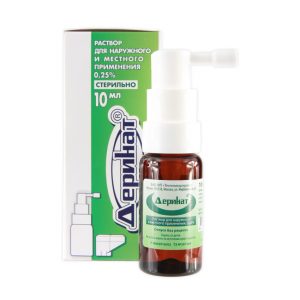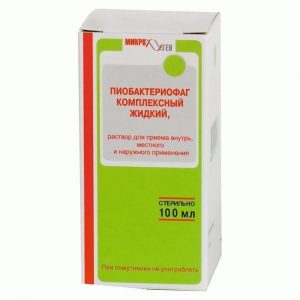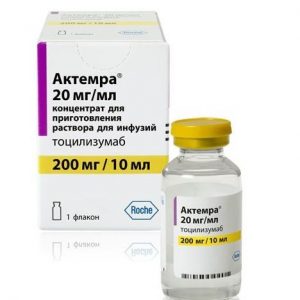Description
Dosage form
Solution for intradermal administration
Pharmacological action
The drug BIOLEC Tuberculin PPD-L is a filtrate of a heat-killed culture of human and bovine tuberculosis mycobacteria, purified by ultrafiltration or by other means, precipitated with trichloroacetic acid, treated with ethyl alcohol and anesthetic ether and dissolved in a stabilizing solvent. The active substance of the drug – an allergen-tuberculoprotein – causes, during an intradermal tuberculin test in an infected or vaccinated organism, a specific delayed allergic reaction in the form of a local reaction – hyperemia and infiltrate (papules).
Indications for
The drug is intended for for BCG revaccination
determination of tuberculosis infection in the population (or a state of hypersensitivity to the tube rkulin, if a post-vaccination allergy does not warrant infection) – diagnosis of tuberculosis
Contraindications
Skin diseases
acute and chronic infectious diseases during the exacerbation period, including convalescence (at least 2 months after the disappearance of clinical symptoms)
allergic conditions (rheumatism in the acute and subacute phases, bronchial asthma, idiomas )
epilepsy
the presence of a quarantine for an infectious disease in the children’s team
Special instructions
Conducting a Mantoux diagnostic test no earlier than 1 month after the disappearance of the clinical symptoms of the diseases indicated in the ² ÑContraindications ² Ñ section or the end of the infectious disease quarantine in the children ² ¢s team.
The interval between preventive vaccination and biological diagnostic Mantoux test should be at least 1 month.
Routine vaccinations can be done after taking the Mantoux test – after 72 hours.
In order to determine contraindications, the doctor (nurse) on the day of performing tuberculin tests carries out a survey and examination of persons subject to tuberculin diagnostics. Mandatory information is required for persons who undergo a diagnostic test of Mantoux, their parents and guardians.
Pregnancy and lactation
Mantoux test can be performed during pregnancy and lactation.
Features of the effect of the drug on the ability to drive a vehicle or potentially dangerous mechanisms
The effect of the drug on the ability to drive vehicles has not been investigated.
Composition of
0.1 ml of the solution contains
active substance – allergen-tuberculoprotein 2 TE,
excipients: disodium phosphate dodecahydrate, potassium dihydrogen phosphate, sodium chloride, polysorbate 80, phenol, water for injection.
Dosage and Administration
Dosage and Administration – intracutaneous (Mantoux). Before conducting a Mantoux test, a mandatory medical examination and thermometry. The Mantoux test is carried out strictly aseptically in this way: the skin of the middle third of the inner surface of the forearm is treated with 70 ° ethanol and dried with sterile cotton wool. The ampoule with the drug is thoroughly wiped with gauze moistened with 70 ° ethanol, then the neck of the ampoule is filed with a scarifier and broken off. The required amount of tuberculin (0.2 ml) is taken up with a 1 ml disposable syringe with a graduation scale of 0.1 ml with a sterile needle No. 08×40. Then, a sterile needle for intradermal application No. 04×13 is put on the syringe, an excess amount of tuberculin is released and 0.1 ml of the drug is injected intradermally. With the correct introduction technique, a white infiltrate with a diameter of approximately 8 mm ² a ² Ñlemon peel ² Ñ ² is formed in the skin. A separate syringe and needle are used for each subject. After opening, the ampoule is kept under aseptic conditions for no longer than 2 hours. Dose size – 2 tuberculin units (TE) contained in 0.1 ml of stabilizing solvent. Mantoux tuberculin test is carried out as prescribed by the doctor. The formulation and evaluation of the Mantoux test is carried out by a doctor or specially trained nurse under the supervision of a doctor.
Mantoux test results are evaluated after 72 hours. The size of the papule is measured using a transparent millimeter ruler. The transverse (relative to the axis of the arm) diameter of the papule is recorded. The hyperemia zone is not taken into account. If the papule size is from 0 to 1 mm in diameter, the reaction is considered negative, from 2 to 4 mm – doubtful, and from 5 mm or more – positive. A reaction is considered hyperergic with the formation of a papule of 17 mm or more in children and adolescents, 21 mm or more in adults, and regardless of the size of the papule, the presence of a vesicle-necrotic reaction, lymphangitis and regional lymphadenitis.
The test is carried out in a sitting position. After the test, the patient should be under the supervision of a doctor (nurse) for at least 30 minutes.
Side effects of
In some cases in people with a high degree of allergy to tuberculin, local reactions, along with large papule and hyperemia, may be accompanied by lymphangitis and lymph denits. In addition, sometimes a general reaction is observed: malaise, headaches, fever.
Often (> 1/100)
– pain, pain sensitivity or discomfort at the injection site immediately after
injection Infrequently (<1/100) – headache, malaise – fever Rarely (<1/1000) – anaphylactic reaction – blistering and skin necrosis in place injections due to hypersensitivity to tuberculin Drug Interactions Do not mix with other medicines in the same syringe. Overdose of Not described Storage conditions Store in a dark place at a temperature of 2 ° C to 8 ° C. Freezing and heating above 18 ° C is not allowed. Keep out of the reach of children! Expiration 1 year Do not use after the expiry date stated on the packaging. Deystvuyuschee substances Allerhen bacteria pharmacy terms for prescription Dosage form solution for injection




